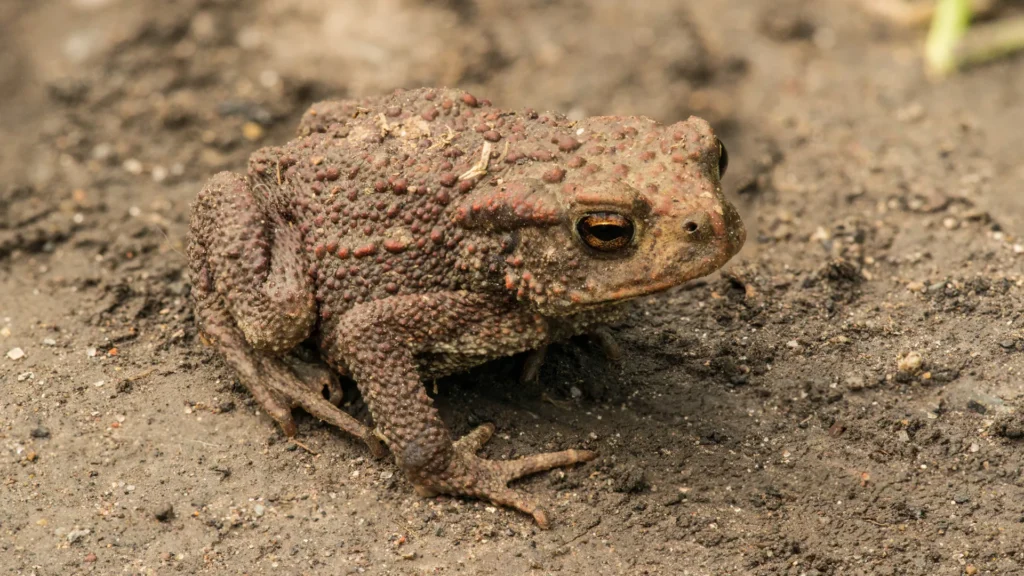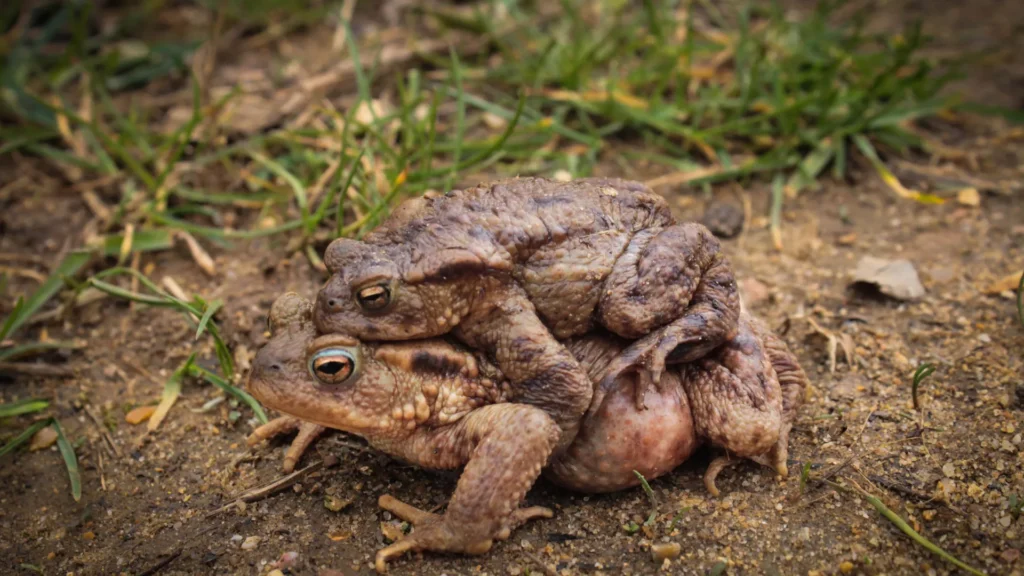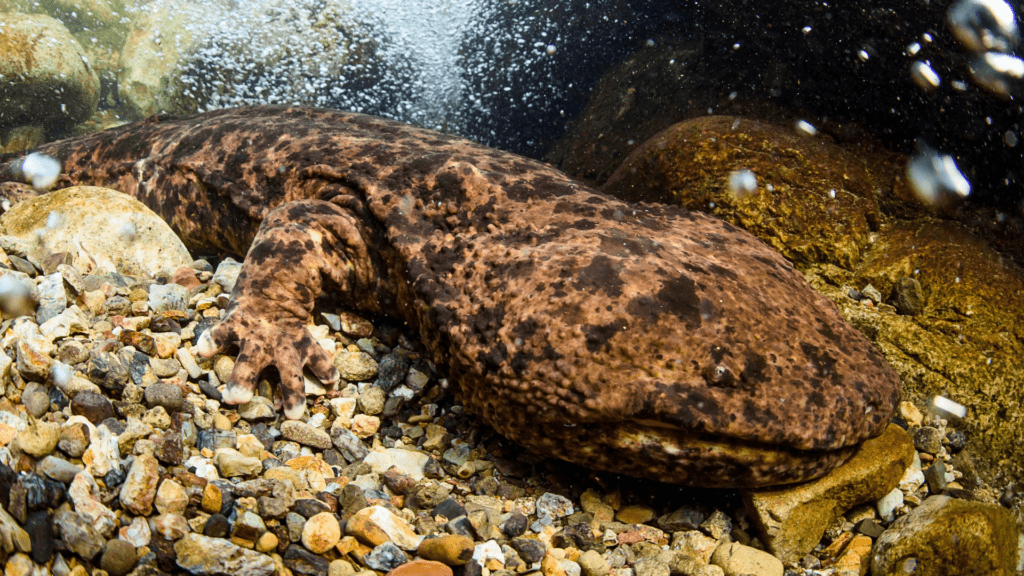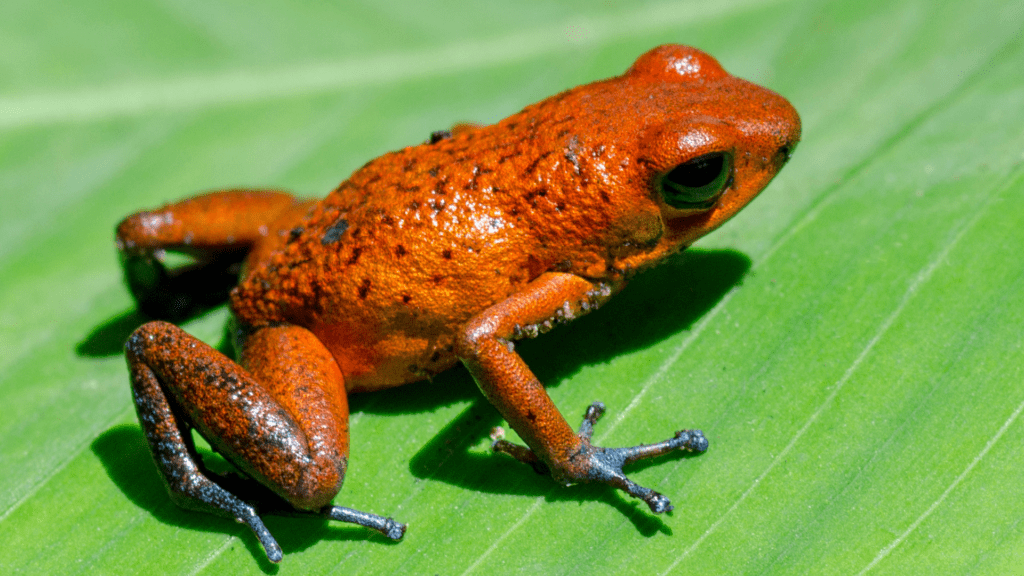The Common Toad, scientifically known as Bufo bufo, is a widespread amphibian species native to Europe. Often confused with the Common Frog, this toad stands out due to its unique characteristics, from its rugged appearance to its notable survival adaptations. Its natural poison and camouflage play a crucial role in its survival.
Subspecies
Several subspecies of the Common Toad are recognized, each with distinct geographical distributions:
- Bufo bufo bufo
- Bufo bufo spinosus
- Bufo bufo gredosicola (restricted to Spain)
Description
These toads are easily distinguishable due to their physical traits:
- Body: Stout and heavy, with an elongated head.
- Color: Their skin color adapts to their surroundings, ranging from brown to olive-gray, often with darker spots.
- Size: Adults reach up to 6 inches (15 cm) in length. Females are larger than males, and southern populations tend to be bigger than northern ones.
- Limbs: Short forelimbs with inward-turning toes and longer, un-webbed hind toes.
- Texture: Dry, warty skin.
- Eyes: Large, protruding, with yellow irises.
Distribution
The Common Toad inhabits most of Europe except for Mediterranean islands, Iceland, and Ireland. Their range extends into western Asia and some parts of Africa. However, their absence in northern Scandinavia is attributed to colder climates.
Hibernation
Common Toads hibernate during winter in well-protected places like abandoned burrows, log piles, and beneath layers of foliage. These sheltered locations provide safety from predators and insulation from the cold. During hibernation, their metabolic rate slows down significantly, allowing them to conserve energy. They remain dormant throughout the cold months, conserving their resources until temperatures rise. In early spring, typically between February and March, they awaken and begin their journey to breeding sites. This annual migration is crucial for reproduction and the continuation of their species.
Habitat
These adaptable Common Toads thrive in a variety of habitats, including gardens, woodlands, parks, fields, and even dry areas without ponds. Their ability to survive in diverse environments is due to their resilience and flexible diet. They seek shelter under rocks, logs, and dense vegetation to avoid predators and harsh weather conditions. In urban areas, they are often found in gardens where insects are abundant. Remarkably, in southern regions, they can be found at altitudes of up to 2,500 meters. This adaptability has contributed to their widespread distribution and survival.

Behavior
Common Toads are primarily nocturnal, becoming active at dusk and remaining hidden during the day under rocks or dense vegetation. This nighttime activity helps them avoid predators and extreme temperatures. Their movement is generally slow, as they alternate between walking and short hops. Despite their unhurried pace, they are persistent hunters, skillfully chasing down prey and capturing it with their sticky tongues. When threatened, they display defensive behavior by inflating their bodies to appear larger and more intimidating. This clever tactic helps deter potential predators and ensures their safety.
Diet
Common Toads are voracious predators with a diverse diet, primarily feeding on invertebrates such as slugs, beetles, flies, caterpillars, and worms. Their hunting strategy involves patiently waiting for prey to come close before swiftly capturing it with their sticky tongues. This diet helps control pest populations, making them beneficial to gardens and agricultural areas. Juveniles initially feed on the nutrient-rich jelly surrounding their eggs, which provides them with essential energy for growth. As they develop, they gradually transition to consuming small insects and other invertebrates. This adaptable feeding behavior supports their survival in various habitats.
Predators
Despite their toxic skin, they are preyed upon by animals like:
- Grass snakes
- Hedgehogs
- Cats
- Foxes
- Diving beetles (piercing through their defenses)
Adaptations
- Toxic Skin: Their paratoid glands secrete bufotoxin to deter predators.
- Defensive Posture: Bowing their heads and raising hind legs to appear intimidating.
Reproduction
After hibernation, males and females congregate at breeding sites. Males often compete intensely for females, gripping them in a mating position called amplexus. Females lay long strings of eggs, measuring up to 4 meters, which hatch into tadpoles after approximately three weeks.
Life Span and lifeCycle
The Common Toad (Bufo bufo) has a fascinating life cycle and a relatively long lifespan compared to many other amphibians. Here’s a detailed look at its life stages and the factors that influence its lifespan:
Life Span
The Common Toad can live up to 10 years in the wild, though some individuals may live longer in ideal conditions. In captivity, with proper care, they can live significantly longer, sometimes reaching several decades.
Life Cycle
The life cycle of the Common Toad consists of several distinct stages, each with its own unique characteristics:
mating
The mating season of Common Toads begins with the arrival of spring. During this time, males move towards ponds and lakes to find suitable mates. They attract females by making specific sounds. Once they find a mate, the male clings to the female’s back and maintains this position until the eggs are laid. The eggs are then released into the water and soon begin to develop. This reproductive process ensures the continuation of the common toads’ population.
Eggs
Common Toads breed in spring, usually between March and April. Females lay thousands of eggs in long, gelatinous strings in ponds or slow-moving water. The eggs hatch within a few weeks, depending on water temperature.
Tadpoles
After hatching, the eggs develop into tadpoles. These small, black creatures attach to aquatic vegetation and feed on egg jelly. Over about 12 weeks, they undergo metamorphosis, growing legs and losing their tails.

Juvenile Toads
Juvenile toads grow rapidly, feeding on small insects and invertebrates. They reach sexual maturity between 3 and 7 years, ready to contribute to the next generation.
Once metamorphosis is complete, young toads, called toadlets, leave the water and move onto land. This stage is critical, as many toadlets fall prey to predators like birds and insects.
Adult Toads
Adult toads return to water each spring to breed, completing the life cycle. They can live for about a decade in the wild, contributing to multiple breeding seasons.
Factors Influencing Lifespan
Several factors affect how long a Common Toad lives:
- Habitat Quality: Clean water and suitable environments are crucial for survival.
- Predation: Predators like birds, snakes, and mammals can reduce lifespan.
- Disease: Diseases such as chytrid fungus can be fatal.
- Pollution: Contaminated water and pesticides can harm toads and shorten their lifespan.
Importance of Lifespan in the Ecosystem
Common Toad’s relatively long lifespan allows it to reproduce multiple times, ensuring the survival of its species. It also plays a vital role in controlling insect populations and serving as prey for larger animals, supporting the food chain.
Conservation and Lifespan
Protecting the habitats of Common Toads is essential to ensuring they reach their full lifespan. Conservation efforts include preserving wetlands, reducing pollution, and creating wildlife-friendly gardens with ponds and shelters.
The Common Toad’s life cycle and lifespan highlight its resilience and importance in maintaining healthy ecosystems. By understanding and protecting these toads, we can help ensure their survival for future generations.
Common Toads as Pets
- Housing: Large tanks with clean, non-chlorinated water and minimal dirt.
- Feeding: Nutritious options like waxworms, mealworms, and crickets.
- Care: Avoid direct sunlight and maintain hygiene to prevent infections.
Conservation Status
The IUCN lists the Common Toad as a species of Least Concern. However, they are protected in certain regions like the UK, where their trade is restricted.
Interesting Facts
- Can blend seamlessly into their surroundings.
- Tend to remain in the same refuge for months.
- Migrate back to their birthplace for breeding.
- Avoid water bodies outside the spawning season.
faq’s
1. What is a Common Toad?
Common Toad is a large amphibian belonging to the family Bufonidae. It is easily recognized by its warty skin and brown or olive-green coloration.
2. How big does a Common Toad get?
Toad typically grows to 8 to 13 cm (3 to 5 inches) in length, with females being larger than males.
3. What does a Common Toad look like?
Warty, dry skin
A brown, olive-green, or grayish body
Copper-colored eyes with horizontal pupils
Short legs, which make it a poor jumper
4. Where does the Common Toad live?
it is found in a variety of habitats, including:
Forests
Grasslands
Gardens
Parks
It prefers moist environments and is often found near ponds, lakes, or streams.
5. What does the Common Toad eat?
Insects
Spiders
Worms
Slugs
Small invertebrates
6. Is the Common Toad poisonous?
Yes, it secretes a toxic substance called bufotoxin from its skin to deter predators. This toxin can be harmful if ingested.
7. What is the lifespan of a Common Toad?
In the wild, the Common Toad lives for 10 to 12 years, though some individuals can live up to 40 years in captivity.
8. How does the Common Toad reproduce?
Breeding occurs in spring, usually in ponds or slow-moving water. Males call to attract females, and females lay 3,000 to 6,000 eggs in long strings. Tadpoles hatch within 2 to 3 weeks and metamorphose into toadlets within 2 to 3 months.
9. Why is the Common Toad important to the ecosystem?
Common Toad plays a vital role in controlling insect populations and serves as prey for larger animals, making it an important part of the food chain.
10. Are Common Toads endangered?
No, it is listed as Least Concern by the IUCN. However, local populations may be threatened by habitat loss, pollution, and road mortality.
11. Can Common Toads be kept as pets?
Yes, but they require specific care, including:
A moist, cool environment
A diet of live insects
Proper handling to avoid stress
12. What predators do Common Toads have?
Birds
Snakes
Hedgehogs
Larger amphibians
13. How do Common Toads defend themselves?
Its toxic skin secretions
Camouflage (its coloration helps it blend into its surroundings)
Playing dead when threatened
14. What is unique about the Common Toad’s skin?
Common Toad warty skin helps it retain moisture and provides protection against predators. The skin also secretes toxins to deter predators.
15. What can be done to help Common Toads?
You can help by:
Creating toad-friendly habitats in your garden (e.g., ponds, log piles)
Reducing the use of pesticides and chemicals
Supporting wildlife conservation efforts

